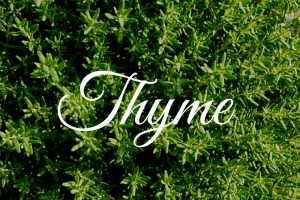Calendula is quickly becoming one of my favorite herbs. Having read about this plant prior to taking a greenhouse management course earlier in the spring, I decided to order the seeds needed to grow it for the plant sale we were to have at the beginning of May. It also happened to be part of my grade!
Aside from my instructor, most of my classmates were not familiar with this happy little plant. At first glance, it appears to be merely a cheery flower that would add tons of color to you garden. But if you take the time to peel off those little petals, you will be amazed what this simple plant can do for you.
How to Plant
What is really neat about calendula is how easy it is to get it started from the seed. Ideally, they should be spaced about 18 to 24 inches apart, because they really fill out once they get started. They are a hearty little plant that can take the cool since their blooms can actually last as far as up into the month of November! Seeds can be dropped about 1/4 to 1/2 inch deep. But what is really exciting is how quickly they can germinate…looks for sprouts to break soil anywhere from 5 to 15 days after seeds are planted.
How to Harvest
Once these plants start producing flowers, look out! They come fast and plentiful. How plentiful? Well, just the act of you plucking the flowers from the stems will generate more flower production. You can actually gather a good bit of flowers every three days or so. Grasp the flower head right at the base and simply pull from the stem. Usually they will just pop off. Oh and that stickiness you feel on your fingertips is completely normal – it actually is a source of the good stuff you will try to extract for healing.
How to Dry
Each time you make a harvesting run for your flower tops, make sure to have a place prepared for them to dry. This can be a paper towel laid on a table or even a cookie baking sheet. You can dry them in the oven, but I would be cautious of this. Every oven is different and it may prove difficult to control how much heat to which the flowers would be exposed. Another method, I recently read about says to simply put your flower tops in a brown paper bag and leave them in a hot car on the dashboard for a few days. Either way, allow three to four days for drying flower tops. If they feel cool to the touch, it means there is still moisture present. Completely dried flower tops will be practically crunchy and they will also be brittle to the touch.
Here’s a great Video showing the versatility of calendula
Calendula officinalis (Calendula)
Paula Tyler gives a presentation on the medicinal properties of Calendula officinalis L., commonly known as Calendula. In this talk, she discusses the botanical and chemical characteristics of the plant, as well as its known biological activities. This medicinal plant monograph presentation was recorded on April 22nd, 2013 as part of Dr. Cassandra L.
Medicinal
Now that we have covered how to plant, harvest and dry this amazing little plant. Let’s look at the medicinal qualities this plant has to offer:
- Anti-Inflammatory – Calendula has substances called flavonoids which enables cells to protect themselves from damage caused by free radicals
- Muscle Spasm Relief – Since calendula serves as an inflammatory, it would soothe muscles that are strained preventing potential spasm
- Skin Wounds – Anti-bacterial properties present in the plant prevent infection, helping wounds to heal quickly
- Helps Menstruation – Muscles are relaxed which helps with cramping and also eases blood flow
- Anti-viral – Essential oils present in the plant prevent viruses
- Mouth Health – Aids in the prevention of gum inflammation because of anti-bacterial properties
- Cancer Fighter – Properties within calendula activates lymphocytes which fight off disease within the body
Miss the beginning of the series? Catch up!
All of these oils can be found in essential oil form. You can purchase them using the following links:
Tried Calendula yet? How would you use it?
There’s a better way to live,
Cathy 🙂



Recent Comments